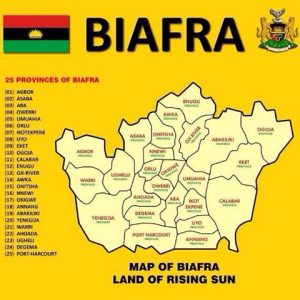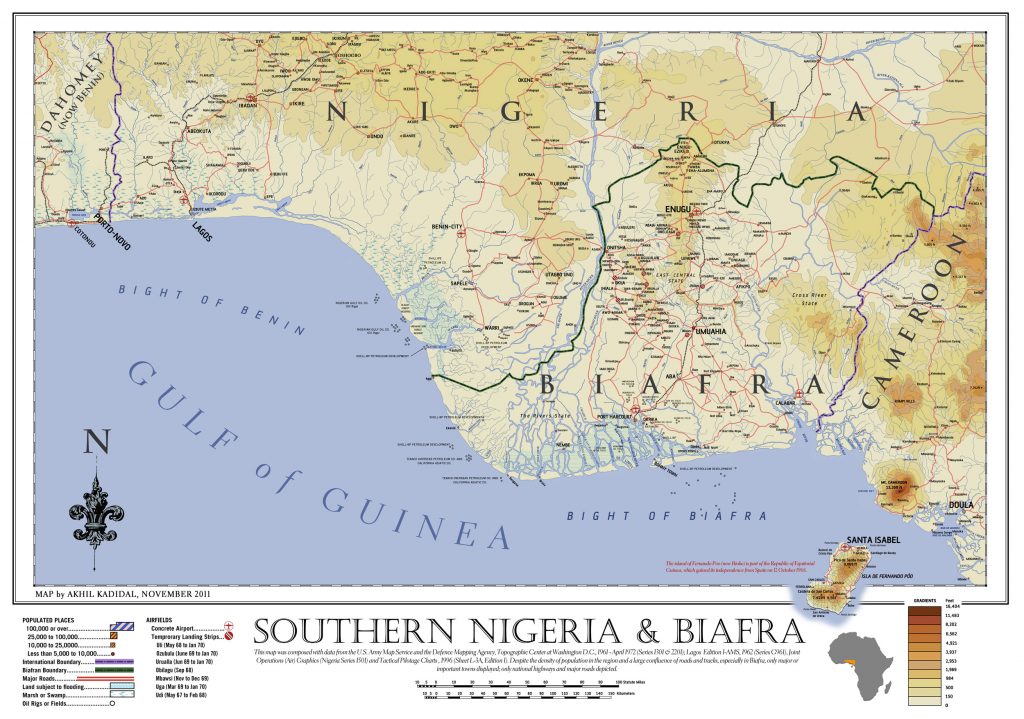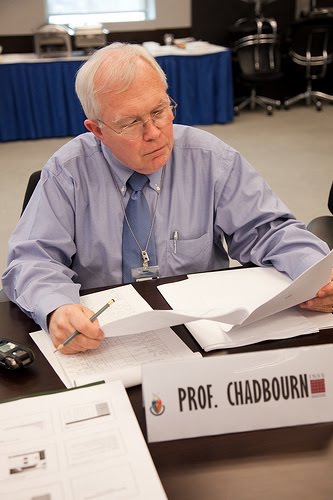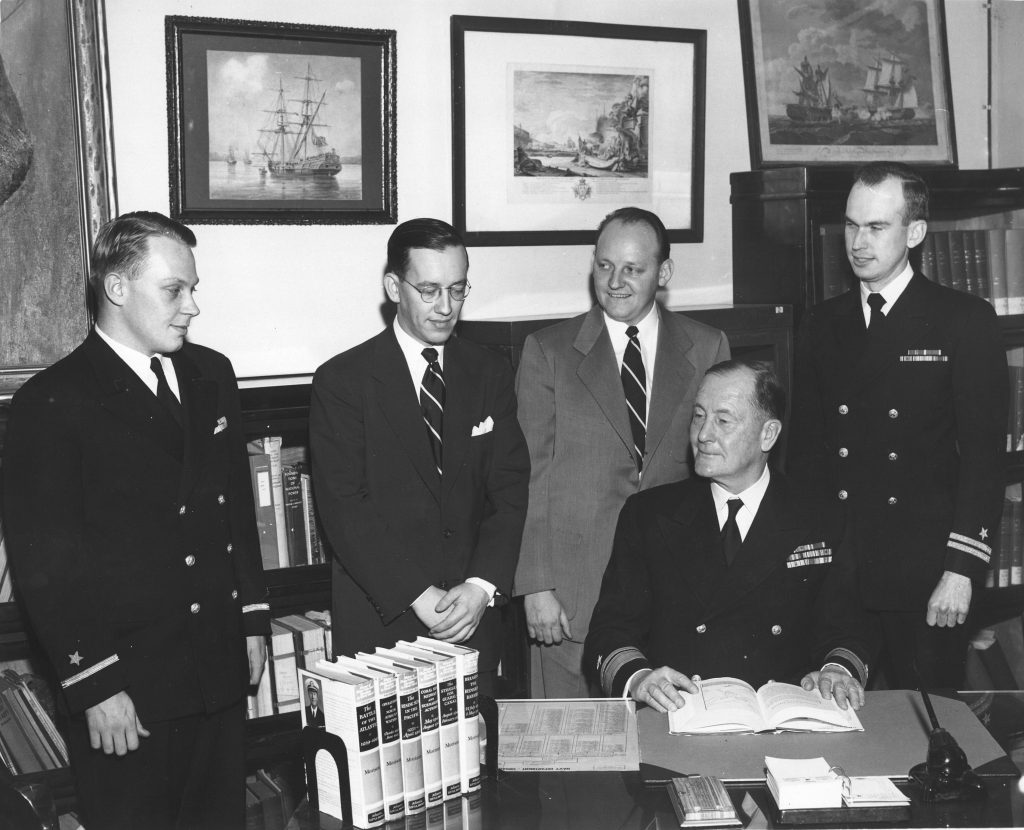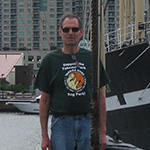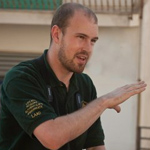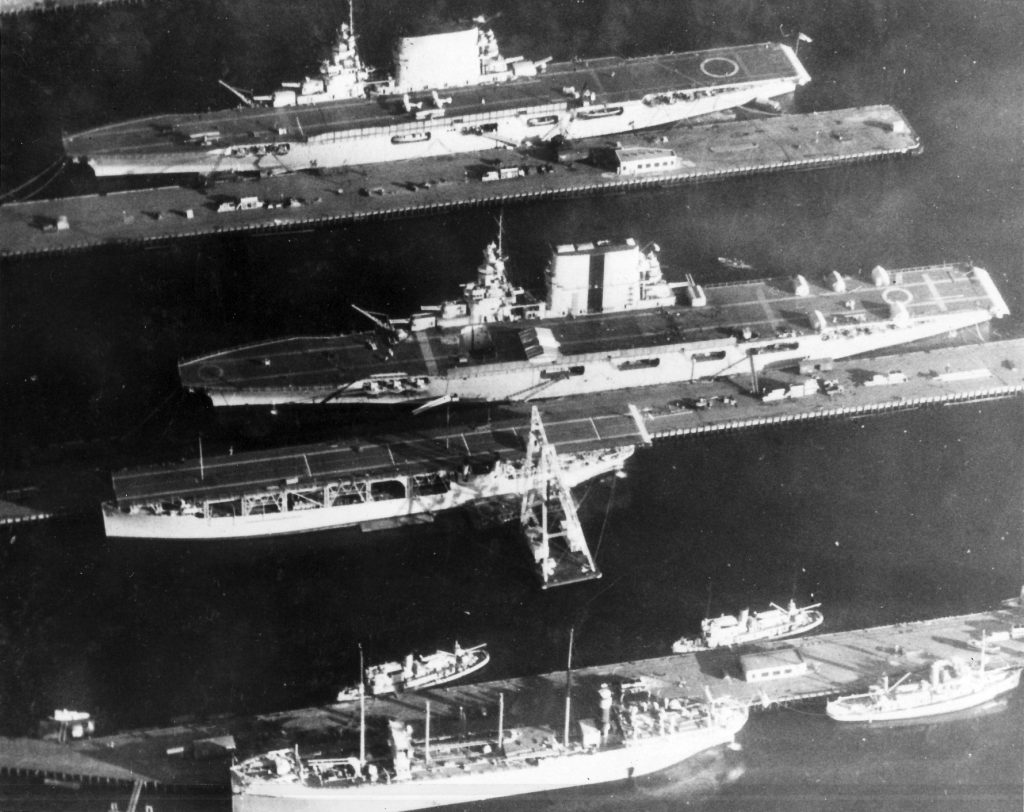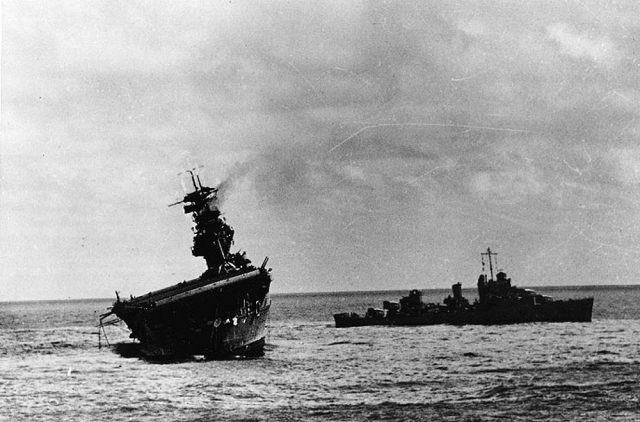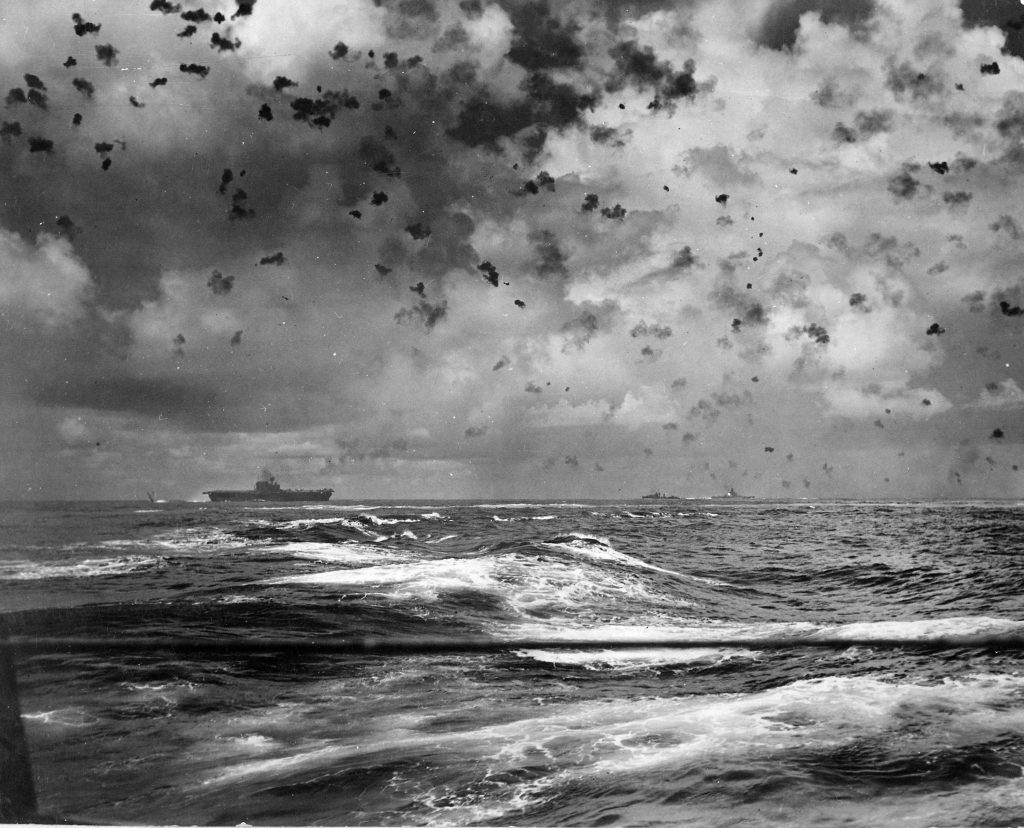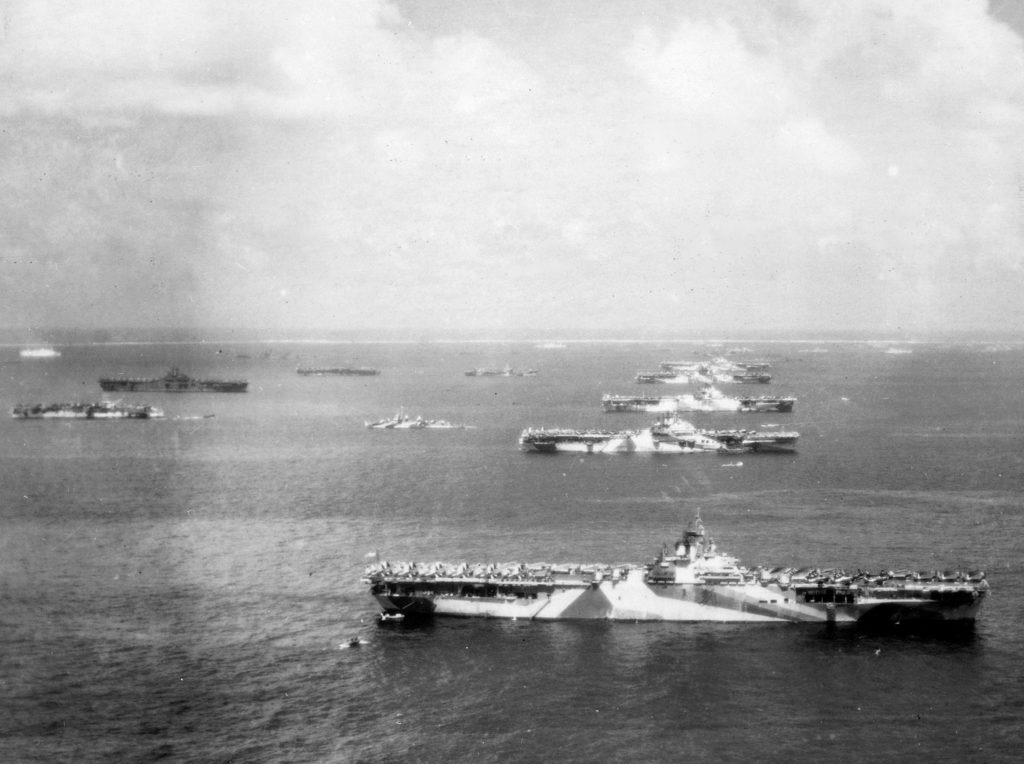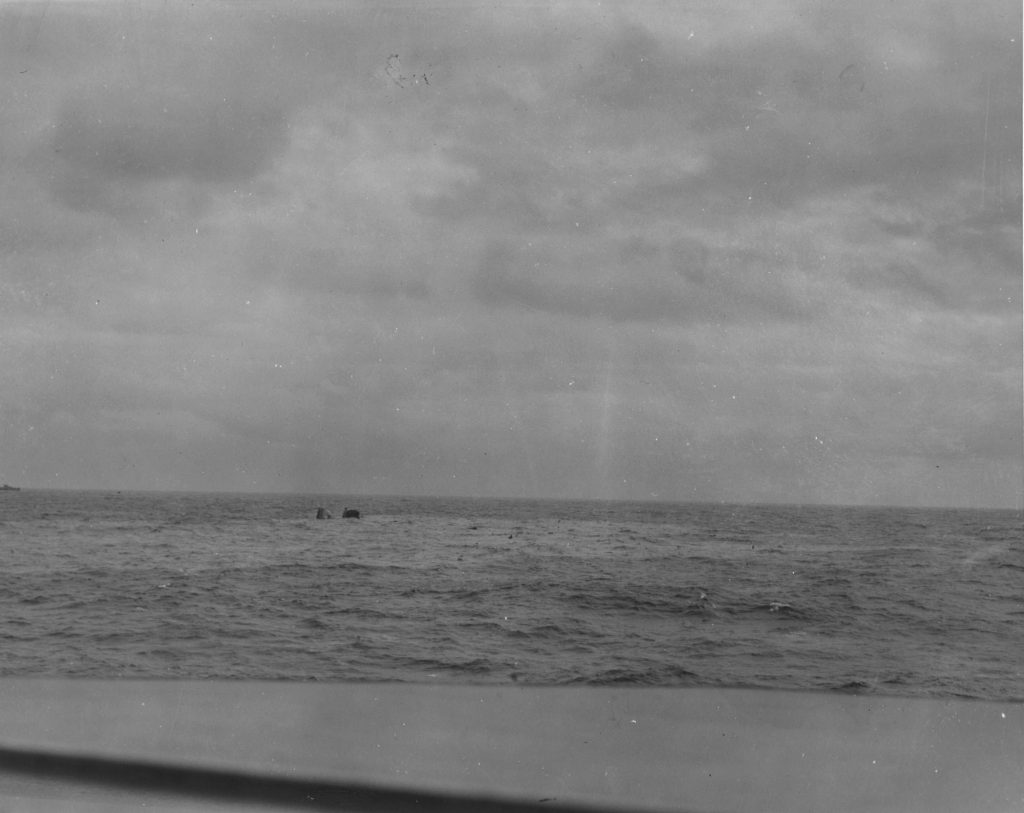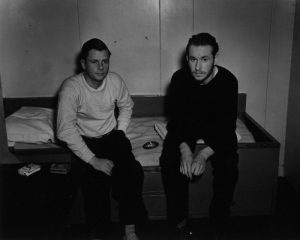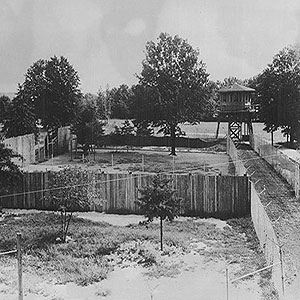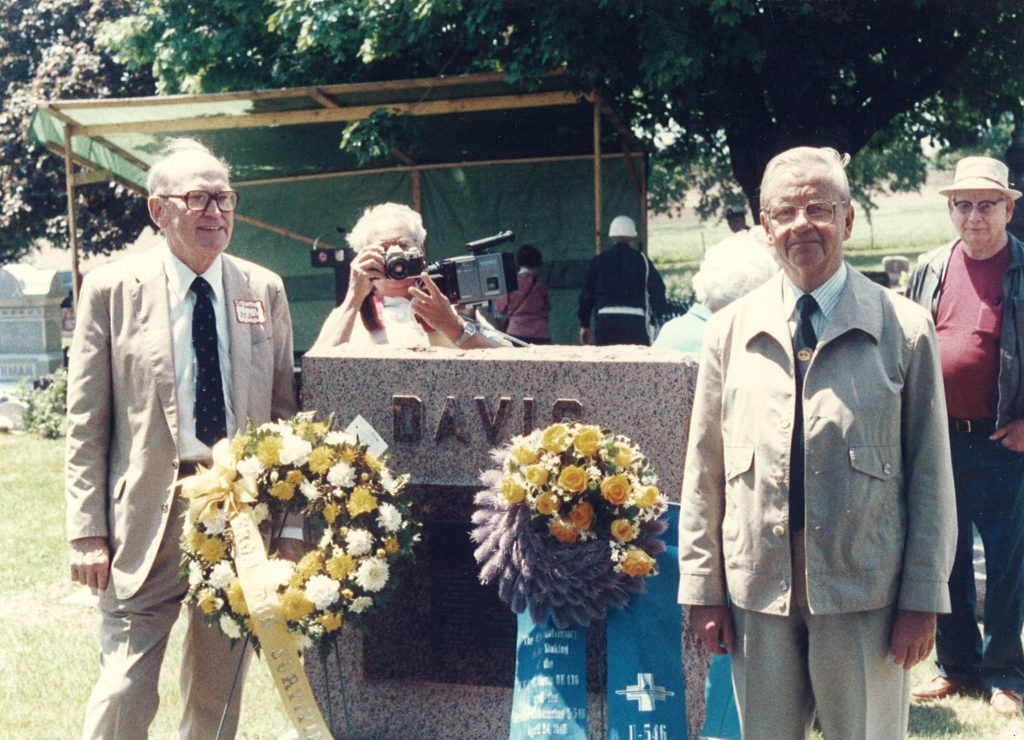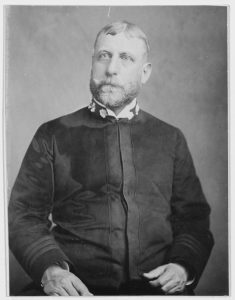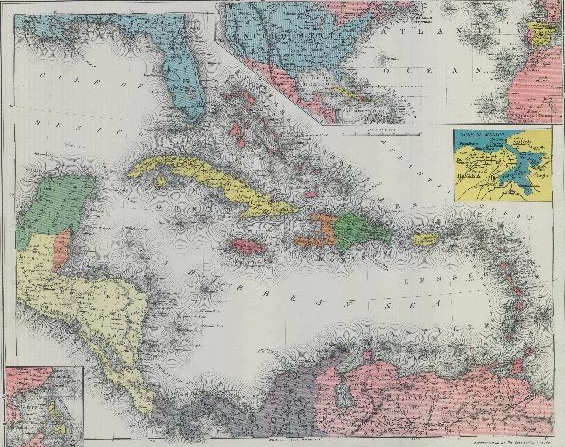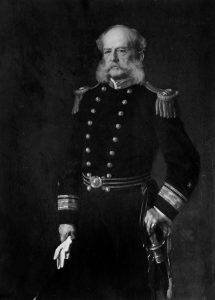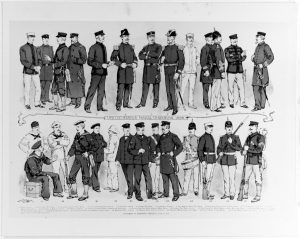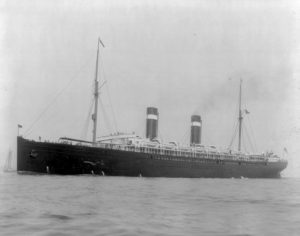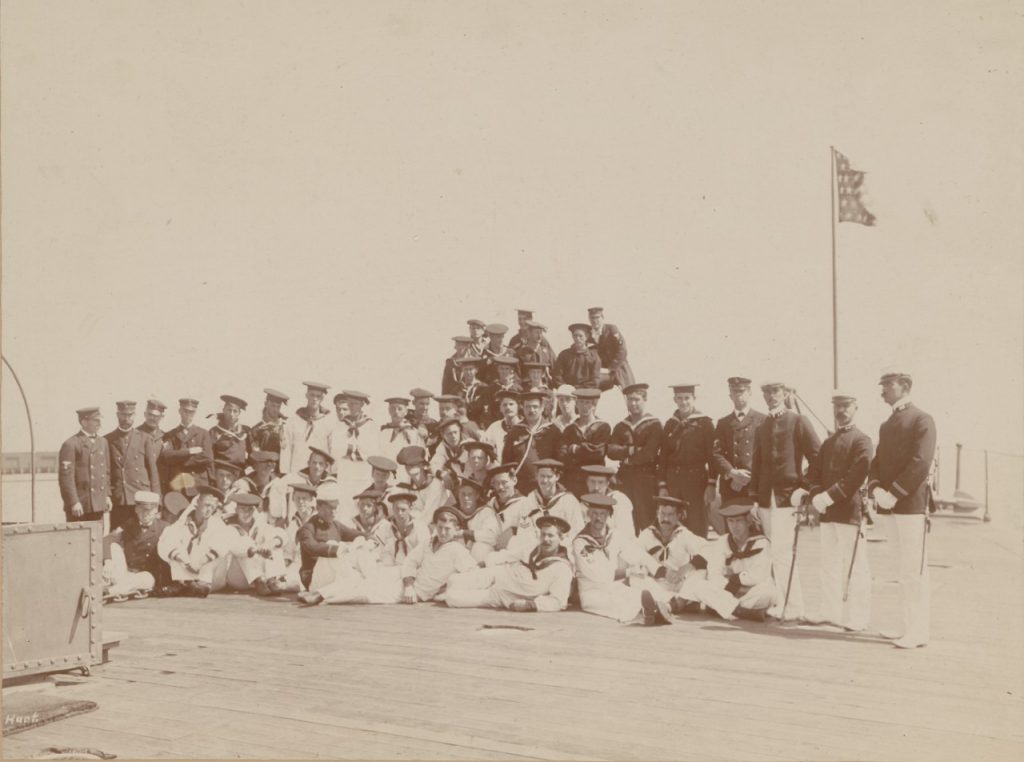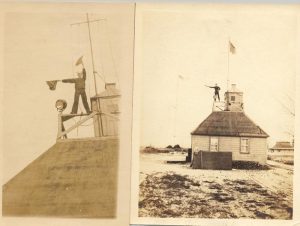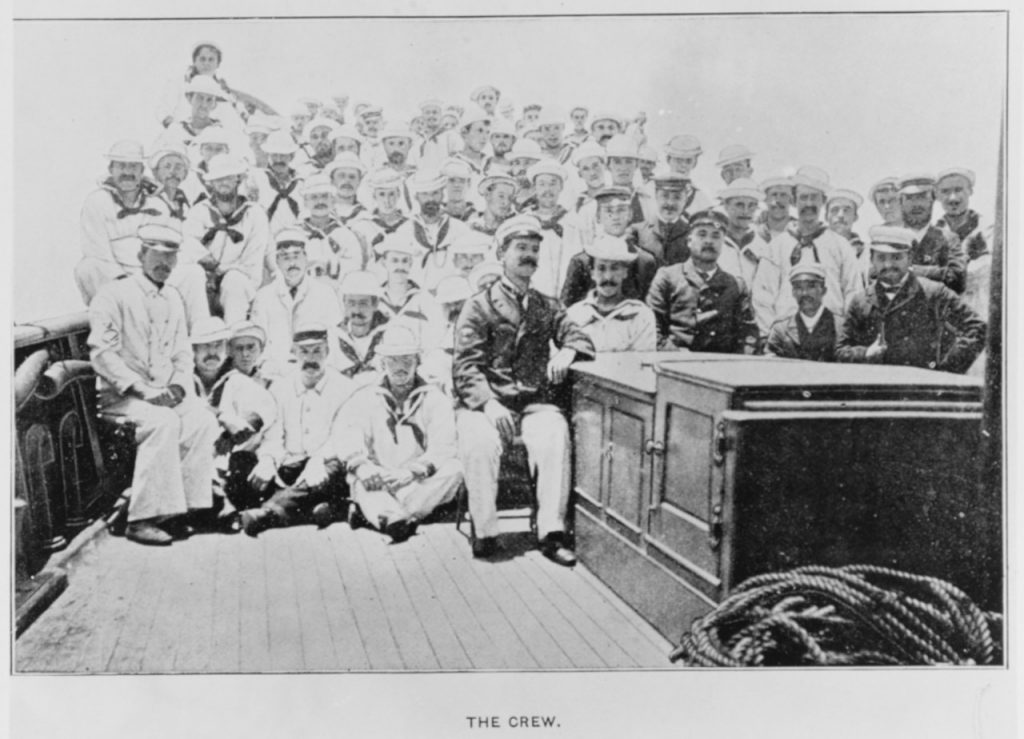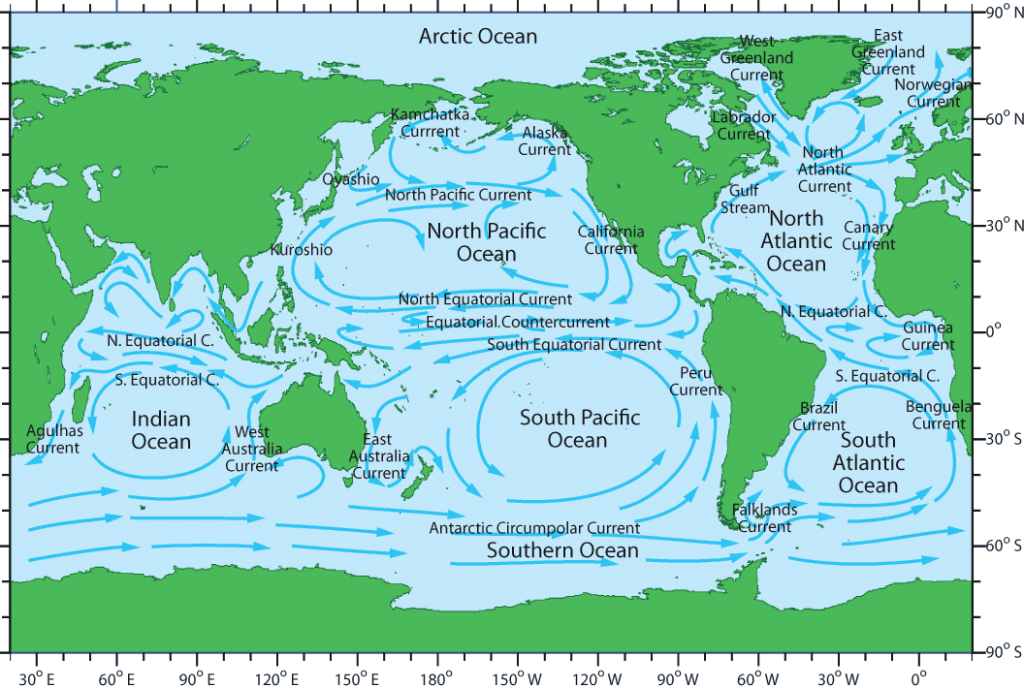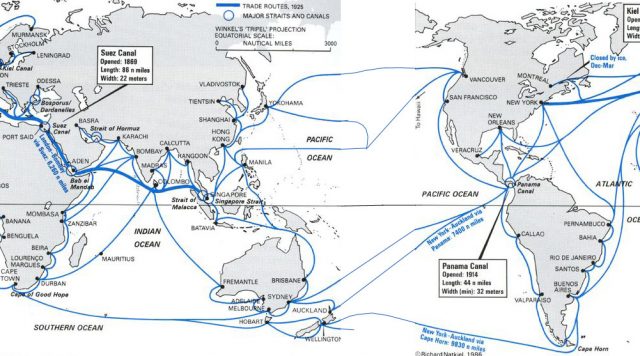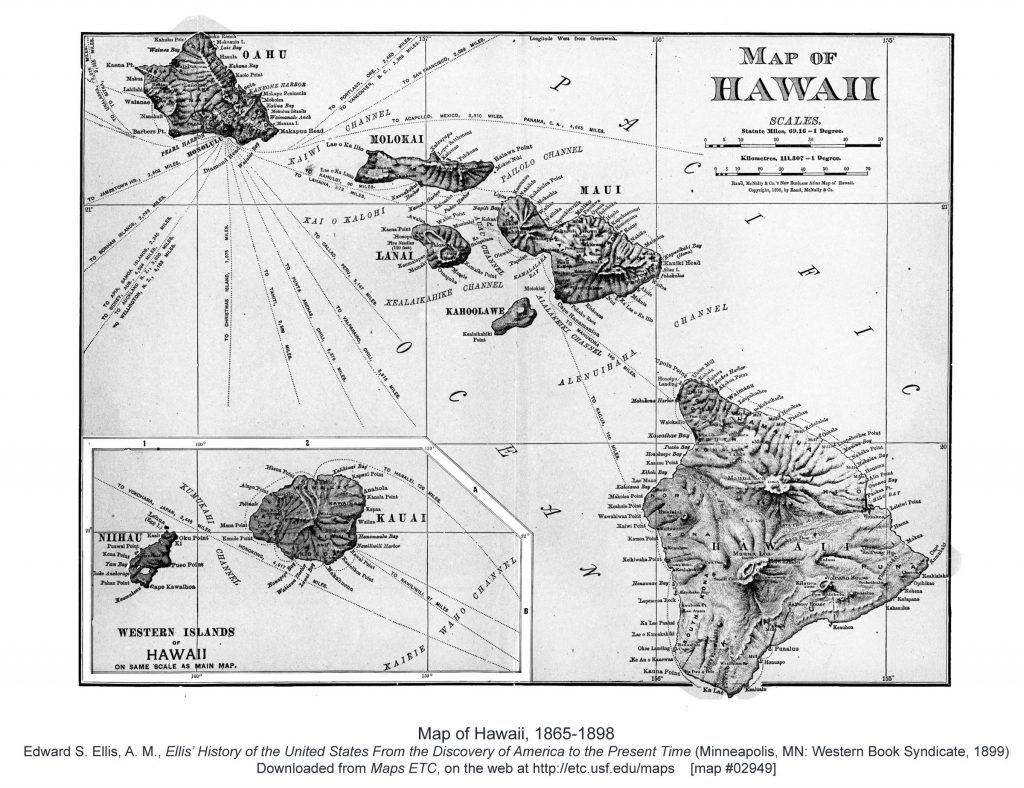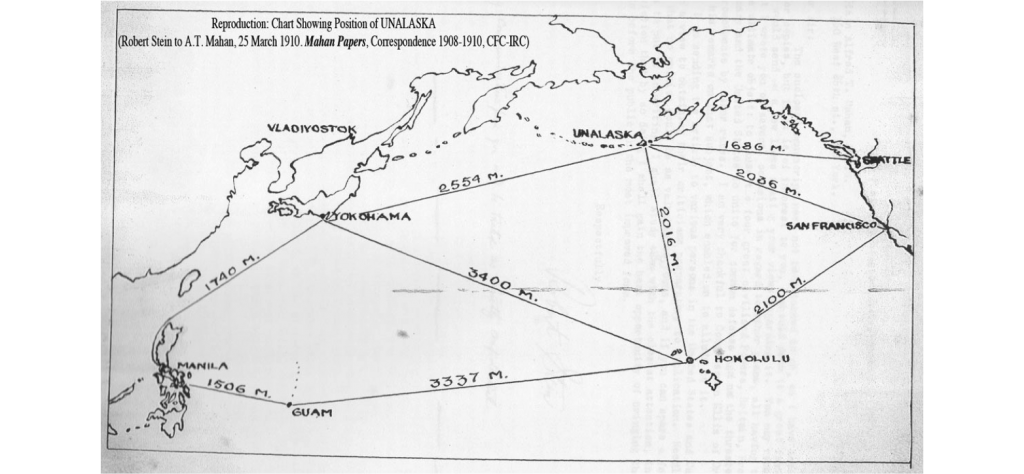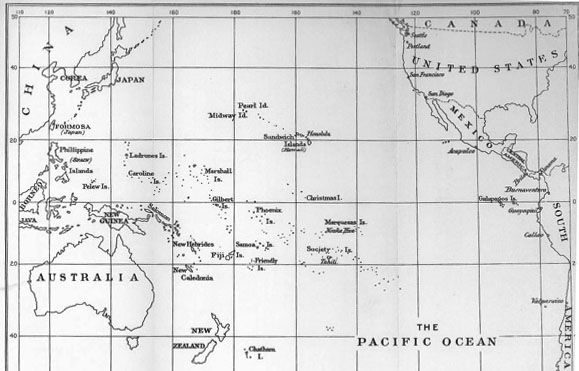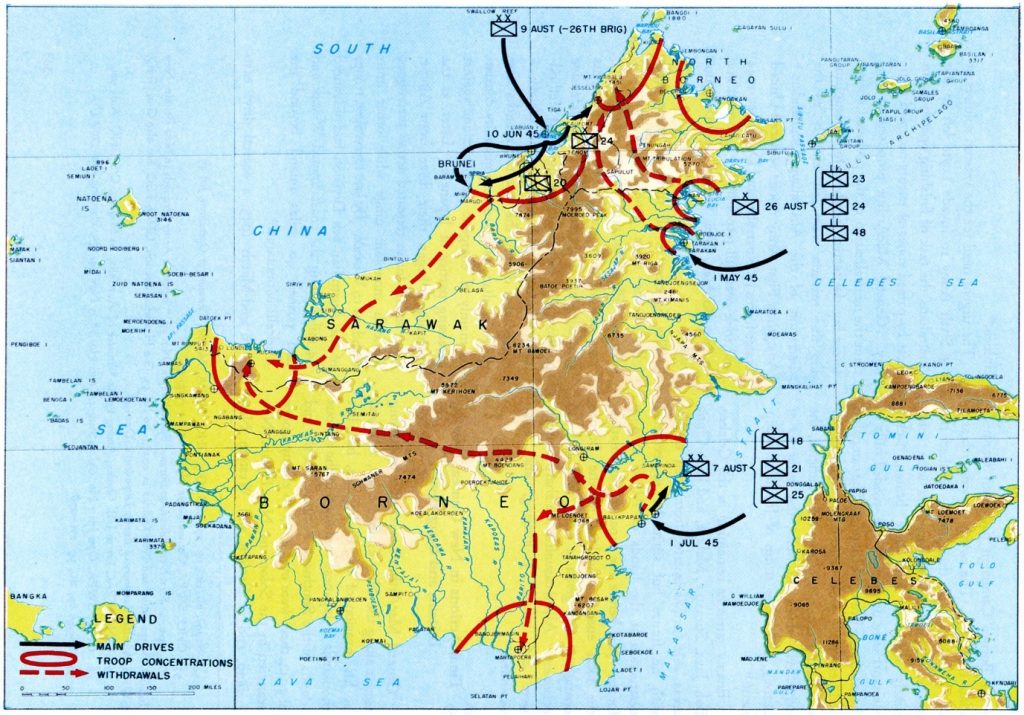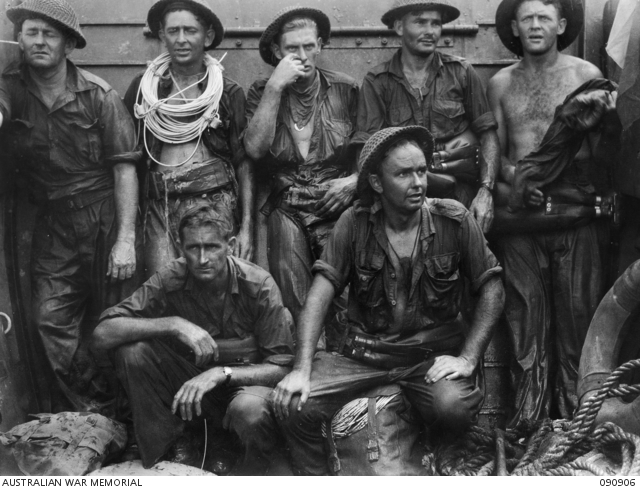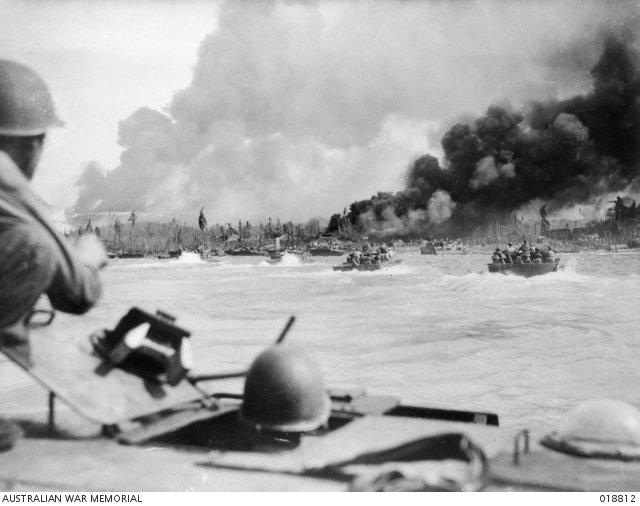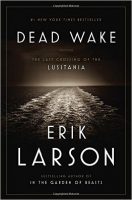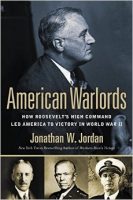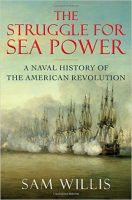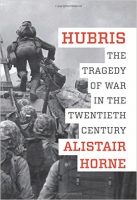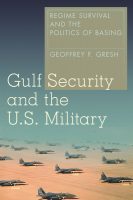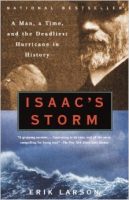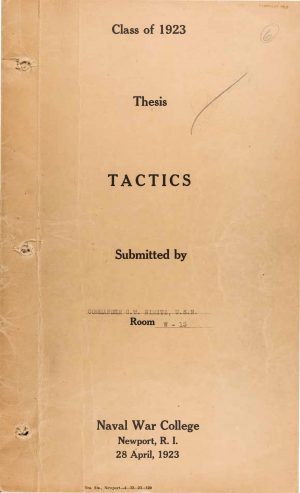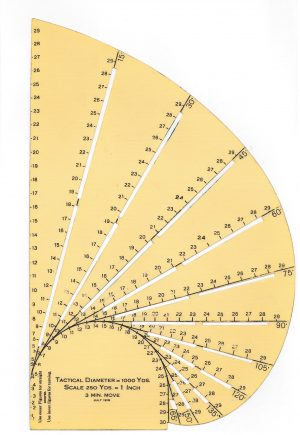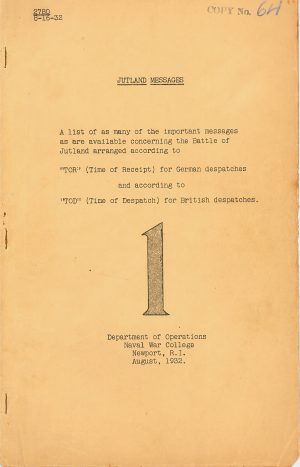Contents:
Development of the Bureaus
Changing the Organization
The Director of Navy Laboratories (DNL)
Changing the Processes
Decline of the DNL
References
Robert V. Gates, Ph.D.
U.S. Naval War College
Abstract: The role of the federal government in science and technology has evolved since the founding of this nation. Likewise, the role of the Navy and, specifically, the organizational structure of the Navy in science has evolved. This paper presents a brief history of this evolution and, in particular, on the development of the Navy laboratory system.
The laboratory system can trace its origins back to the establishment of the Naval Torpedo Station in Newport, Rhode Island in 1869. Certain aspects of the laboratory system can be related back to the earlier engineering activities at the Washington (D.C.) Navy Yard and even to the naval shipyards. Throughout this early history, the Navy’s Research, Development, Test and Evaluation (RDT&E) establishments were aligned organizationally with three bureaus: Bureau of Ordnance (BuOrd), Bureau of Ships (BuShips), and Bureau of Aeronautics (BuAer). The bureaus, which reported to the Secretary of the Navy’s office through a uniformed bureau chief, represented the material procurement side of the Navy’s bilinear structure. The operational forces – the other side of the organization – reported to the Chief of Naval Operations (CNO).

U.S. Naval Proving Ground, Indian Head, MD.
The federal government, and the military departments in particular, have a somewhat limited history in science and technology. The emphasis in the Navy has been on weapons development based on testing and engineering or, put another way, on the production or acquisition of the required weapons or ships. Interest in basic and applied science developed, for the most part, during World War II. Hence, Navy RDT&E establishments that predate World War II were often of one type and those that developed during the war years were of another. For example, the BuOrd activities at Dahlgren and Indian Head and the BuShips activity at Carderock all have their origins at the Washington Navy Yard and were primarily testing or production facilities.
In contrast, other activities put a greater emphasis on research, such as the Naval Ordnance Laboratory at White Oak, which had its primary growth during World War II, and the Naval Ordnance Test Station at China Lake, which developed from a California Polytechnic Institute laboratory during the war years. In the end, the bureau laboratories concentrated on the support of system development and acquisition and did very little basic research. Most of the research was performed by the Naval Research Laboratory under the control (after World War II) of the Office of Naval Research. Further, BuOrd establishments, since they worked in areas where there was little or no commercial market, differed from those in BuAer and BuShips. This was manifest in the relationships between the laboratories and the bureaus (and in the assignments the laboratories received) and between the laboratories and non-governmental institutions.
The organization of the military and the nature of government science and technology and research and development came under review after World War II. By the late 1950s and early 1960s, there was a great deal of interest developing around the Navy’s RDT&E organizations. Much of this interest can be characterized, in retrospect, as concern with the strategic management of the laboratory system. To one degree or another, this concern has persisted for the last four decades. Over the years there have been a variety of forces – that changed over time – that shaped the problem of strategic management of the Navy laboratory system. The solution, however, has taken the same general form – reorganization.
Developments of the Bureaus
At its founding the Navy was very small and equipped mostly for coastal operations. During the Jefferson administration (in 1806), for example, there were fewer than 250 officers and approximately 900 seamen in the Navy (Cunningham 1978). The Navy Department was the smallest in Washington, D.C. with a staff that consisted only of the Secretary and Accountant of the Navy and 12 clerks (Cunningham 1978). The military officers controlled activities at sea and civilians administered the shore establishment. The Navy Department administered six shipyards. The responsibility for superintending these yards was combined with that of the Naval Agent in all of these yards except Boston. The Naval Agents were responsible for “the building, fitting, and supplying of a naval force” (Cunningham 1978). The situation changed after the War of 1812.
A review of the Navy’s performance during the war identified a need for more professional staff and for an organizational change. Consequently, the Board of Naval Commissioners was established in 1815 and assigned duties relating “to the building, repairing, and equipping of ships and superintending of Navy Yards” (Franke 1959). This change was justified by the increase in the size and scope of the business not by an increase in its complexity. In fact, there was very little “invention” evident in the Navy since most shipbuilding was still done by craftsmen and most guns were of European origin or design. This organizational change marked the first sign of the bilinear organization that characterized the Navy well into the 20th century.
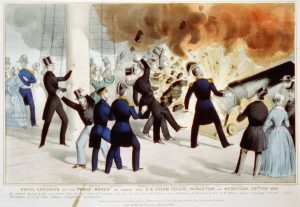
Awful explosion of the “peace-maker” on board the U.S. Steam Frigate Princeton on Wednesday, 1844-02-28. New York: Published by N. Currier. Currier & Ives. A size. Lithograph print, hand-colored. Currier & Ives (LOC PHOTO)
The Commissioner organization proved to be inadequate due to a lack of technical skills to address the more complex and expanding technical problems that were developing. It was replaced by the Bureau system. Five bureaus were established in 1842: Yards and Docks; Construction, Equipment, and Repair; Provisions and Clothing; Ordnance and Hydrography; and Medicine and Surgery (Furer 1959). The number and nature of the bureaus changed on several occasions (e.g., after the Civil War and several times between 1900 and 1959) but the system lasted until 1966.
This same period saw the development of the test and engineering stations and activities that were the forerunners of the current Navy laboratory system. Among the earliest of these was the Experimental Test Battery established by Lt. John A. Dahlgren at the Washington Navy Yard in 1847. Dahlgren was also named Head of Ordnance Matters at the Navy Yard. These particular developments were motivated by the ordnance weaknesses revealed in the War with Mexico and, especially, by a gun explosion on the U.S.S. Princeton that killed the Secretary of the Navy and the Secretary of State as they attended a shipboard demonstration (Peck 1949).
In the remaining years of the century, other engineering and test stations were established and were usually associated with one of the bureaus. This included, for example, the Naval Torpedo Station in Newport, Rhode Island (1869), the Naval Gun Factory (1886) and the Experimental Model Basin (1898) at the Washington Navy Yard, and the Naval Powder Factory at Indian Head, Maryland (1890). The trend continued through World War II. By the time of the establishment of the Director of Navy Laboratories in 1966, there were 15 Navy laboratories associated with the bureaus.
Changing the Organization
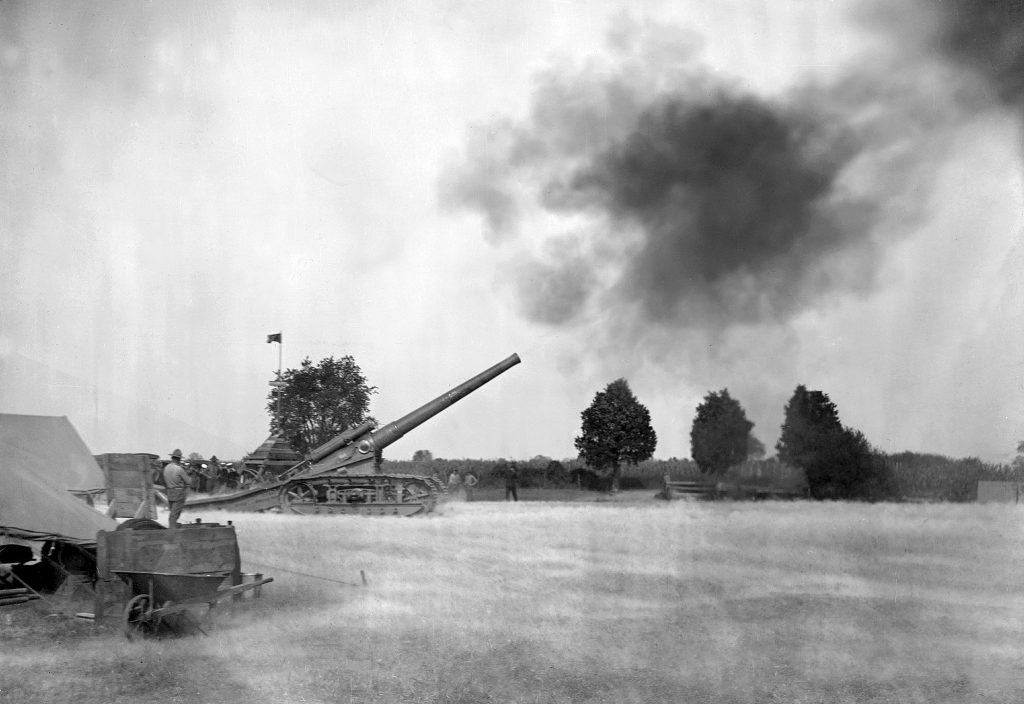
1. First firing at Lower Station of the NPG Dahlgren, VA on 16 October 1918 (USMC 7”/45 caliber tractor mounted gun). (U.S. Navy photo)
Throughout this period (1842-1966), the Navy was characterized by a bilinear organization – the “users” of the weapons and systems and the “developers and acquirers” of these systems. The users were the operating forces that after 1915 reported to the Secretary of the Navy through the Chief of Naval Operations. The developers and acquirers were the bureaus whose Chief, a flag officer, reported to the Secretary. The science and technology system in the Navy can also be characterized as bilinear in nature. In this case, the two components are foundational (or basic) research and systems development (including applied research). In the post-World War II Navy, basic research was the responsibility of the Office of Naval Research (ONR) and the Naval Research Laboratory. Systems development with the associated applied research was performed by the bureau laboratories. One point of contention was the relationship between the two components. ONR (in a position represented by Vannevar Bush) viewed the overall process as linear – development was preceded by applied research and basic research. This implied that management of the entire process (preferably by ONR) was required. The bureaus, being more interested in developing and improving systems, were less concerned with basic research than with technology that was available to be applied to the systems under their cognizance.
This led to issues of funding and control of the research agenda. One result was the establishment of an organization to plan and budget for research in the Department of Defense – the Assistant Secretary of Defense (Research and Engineering) in 1957 and the Director of Defense Research and Engineering (DDR&E) in 1958. The services followed suit. In the same year, the Assistant Secretary of the Navy (Research and Development) replaced the Assistant Secretary of the Navy (Air) for planning research in the Navy.
These changes set the stage for a series of studies that changed the face of the Navy laboratory system. The studies addressed elements of the strategic management of Navy research (although that term does not appear to have been used): control, budget, staffing, and facilities. Undersecretary of the Navy William Franke released a study of Navy organization (Department of the Navy 1959) that recommended that the bilinear structure of the Navy be retained. His committee observed that there was confusion concerning the responsibility for the development of certain systems, such as missiles. They proposed to solve this by combining the Bureau of Ordnance and Bureau of Aeronautics to form the Bureau of Naval Weapons. They anticipated that this would also eliminate the need for additional independent program offices such as the one set up to develop Polaris.
The Task 97, or Fubini report, (Department of Defense 1961) noted several problems with DOD laboratories: low morale, non-competitive salaries, substandard physical plants, and difficulties with executive management due to dual leadership (civilian and military) and lack of technical qualifications. The report recommended that the laboratories be placed under the control of the service Assistant Secretaries for Research and Development and that there be a single laboratory director and changes to improve the Military Construction (MILCON) process (under the service Assistant Secretaries). They also proposed an increase in salaries for laboratory directors and government scientists and engineers.
President John F. Kennedy directed the Bureau of the Budget to review government contracting for research and development (Bureau of the Budget 1962). The resulting Bell Report noted that some 80 percent of federally funded R&D was done through non-Federal institutions and that it was in the national interest to continue to rely heavily on these institutions. Nevertheless, there were government roles in R&D that could not be abdicated and there were concerns that needed to be addressed – maintaining the technical competence required to manage non-government R&D and performing R&D directly. The study recommended that scientist’s salaries be increased as well as opportunities for more interesting work assignments and professional development. It was also proposed that laboratory directors be given more direct responsibility for personnel and facility issues. This was echoed by the Furnas Report (Office of Director, Defense Research and Engineering 1962). This Defense Science Board (DSB) report additionally recommended programs that allow government scientists to spend a sabbatical period in industry or university laboratories (and vice versa) while it cautioned against strengthening government laboratories at the expense of not for profit and industry laboratories.
Rear Admiral Rawson Bennett wrote a report (Department of the Navy 1962) that reviewed the management of Navy R&D. He noted a number of problems: fragmentation of executive responsibility on the developer/acquirer side of the bilinear organization, lack of a long range plan for R&D, difficulty of transitioning from ideas to development, and a shortage of “truly expert personnel, both military and civilian.” He also observed that it is difficult to maintain an adequate technological base through basic R&D given the greater attraction of development. He made recommendations concerning organization both outside and within the bureaus: formation of a “supra-bureau” level executive, Chief of Naval Logistics; consolidation of all R&D guidance under the Deputy CNO for Development; and realignment of some bureau responsibilities. He also offered some proposals for addressing problems that he perceived with personnel, facilities, and funding.
In 1963, the Secretary of the Navy established the Naval Material Support Establishment (NMSE) and assigned overall responsibility for coordination of the material bureaus to the Chief of Naval Material (CNM). This organization continued the bilinear structure since the CNM reported to the Secretary independently of the CNO (Booz, Allen, and Hamilton 1976).
The Director of Navy Laboratories (DNL)
Chalmers Sherwin, Deputy Director Defense Research & Engineering, made proposals for changing the management and operation of in-house DOD and Navy laboratories (Sherwin 1964a,b). In the DOD study he proposed that a Weapons System Development Organization (WSDO) be formed to manage most applied research and development programs and test and evaluation centers. He also proposed a Department Laboratory Organization (DLO), under civilian leadership, to manage all basic research and to perform in-house research and exploratory and advanced development. The head of each DLO (called the Director of Navy Laboratories in the Department of the Navy) was to report to the service Assistant Secretary for Research and Development. His proposal would implement many of the recommendations of the Bell Report.

Chalmers Sherwin
The Sherwin proposal for the Navy applied the fundamentals of his DOD plan. He proposed the establishment of the DNL, reporting to the Assistant Secretary of the Navy (Research and Development), and nine principal Navy R&D laboratories subordinate to him. The Navy concurred with many of Sherwin’s observations but disagreed with his organizational proposal. The Navy responded with studies by RADM J.K. Leydon (1964) and the Assistant Secretary of the Navy (R&D), Robert Morse (1965). Both studies argued for the traditional bilinear organization and for keeping R&D closely linked to production, procurement, and maintenance (i.e., no organizational barrier between research and system development). Both advocated a review of policies and processes concerned with personnel, military construction, and financial management. Morse proposed to keep the principal laboratories linked to the bureaus and to establish a DNL coequal to the Chief of Naval Research (CNR) and Chief of Naval Development (CND). The DNL, reporting to the Assistant Secretary, would be responsible for long-range planning for personnel and facilities. He also proposed to change the budget structure and programming procedures to provide block funding to the laboratories.
The Assistant Secretary of the Navy chartered a review of all in-house research, development, test and evaluation (RDT&E) activities by Dr. William P. Raney. (Department of the Navy 1965) Raney’s task force identified nine major Navy capabilities and proposed that an RDT&E activity be established for each. These RDT&E activities were to be formed through an examination of existing activities leading to decisions about consolidation, relocation, or elimination of some of them. Raney’s report makes a number of such specific recommendations.
These studies culminated in two actions. First, in August 1965 it was decided that the four material bureaus would be abolished within a year and replaced by Systems Commands. In 1966, it was further decided to replace the Naval Material Support Establishment with the Naval Material Command (NAVMAT) and to assign the CNM to report to the CNO (Carlisle 1993b). This marked the end of the bilinear structure in Navy R&D. The major Navy laboratories were to report to the CNM rather than to the systems commands that succeeded the bureaus.
Second, in December of 1965 Secretary of the Navy Instruction 5430.77 established the Director of Navy Laboratories. The DNL was to report to the Assistant Secretary and was to also act as the Director of Laboratory Programs in the Office of Naval Material. He was assigned responsibility for the in-house Independent Research (IR), Independent Exploratory Development (IED) programs, the in-house exploratory development technology programs, and the associated funding. He was also given authority to control the RDT&E MILCON program and the distribution of civilian personnel, to establish laboratory requirements and policies, and to direct long range planning for RDT&E resources. It is interesting to note that the first person asked to be the DNL, Dr. Gregory Hartmann (Technical Director of the Naval Ordnance Laboratory), turned it down. He described the DNL/DLP position as “awkward and perhaps untenable” and was convinced that the DNL had little real responsibility and authority over the laboratories (Smaldone 1977). (Note that the budget controlled by the DNL was typically 3 to 5 percent of a laboratory’s budget. The balance came from the systems commands.)
In 1966, the Director of Defense Research and Engineering (DDR&E), John Foster, asked Dr. Leonard Sheingold to lead a Defense Science Board study of in-house laboratories. The DSB proposed that the laboratories be reorganized into weapons centers. Soon after the DDR&E directed that the Navy initiate planning to establish weapons systems development centers, the CNM approved a plan for their establishment. Implementation of the plan in July 1967 started a process of reorganization that moved the Navy from 15 principal laboratories to 6 weapons centers over a period of some 7 years.
Changing the Processes
There were other important changes in the late 1960s and early 1970s. As late as 1967, the laboratory financial systems were as disparate as their management histories. The Department of Defense initiated Resource Management Systems (RMS) in the late 1960s. The Navy converted all of the CNM laboratories to Naval Industrial Funding (NIF) in 1969. NIF had been introduced in the Naval Research Lab and Naval Ordnance Lab as early as 1953 (and earlier in the shipyards). While this process aided financial management in the laboratories, they never realized its full benefits due to limits on the availability of funding, personnel ceilings, and procedural rules. (Booz, Allen, and Hamilton 1976)
A second major change was the implementation of Project REFLEX (Resources Flexibility). In 1967, in response to a Civil Service Commission study of in-house laboratories, Project REFLEX was initiated to test the feasibility of removing controls on staffing levels at the laboratories in favor of fiscal controls. The 3-year experiment in the CNM laboratories ran from 1970 to 1973. Despite favorable reviews by the GAO and the DNL, it was allowed to expire.
The laboratories – both Defense and Navy – continued to be studied throughout the 1970s. The Task Group on Defense In-House Laboratories and the second DNL, Dr. Joel Lawson, identified a number of laboratory problems that needed to be addressed. They included the lack of clarity in roles and systems for which each lab has responsibility, conflict between the sponsors of established programs and the purveyors of new ideas – the laboratories, insufficient discretionary funds under the direct control of the laboratory directors, and the lack of full utilization of laboratory expertise and resources (Office of Director, Defense Research and Engineering 1971; DNL 1971, a,b).
The Office of the Director, Defense Research and Engineering and the Secretary of the Navy sponsored studies of laboratory missions and operations. The Hollingsworth study recommended a recasting of the laboratory mission statements and a requirement that sponsors assign work and funding to the laboratories in strict accordance with their missions. This was intended to reduce the laboratory competition for funds that NIF motivates (as well as the resulting mission overlap) (Hollingsworth 1974). The Navy-Marine Corps Acquisition Review Committee (NMARC) suggested that the Navy needed to reaffirm the bilinear structure of Navy R&D (Department of the Navy 1975). They proposed to do this by assigning the CNM more responsibility for the management of development funding under the supervision of the Assistant Secretary of the Navy (R&D).
Most of the studies in the 16 years from 1960 to 1976 that addressed the in-house Navy laboratories supported a policy of coordination of research under the Secretary of the Navy, added levels of review and oversight to the R&D process, and added more complex financial accounting systems. The most recent studies (e.g., Hollingsworth and NMARC) raised the concern that the changes had created as many problems as they had remedied. In addition, there was a growing concern about the technology base and the ability of the Navy to integrate the efforts of the systems commands to develop ships and airplanes. During the Carter and Reagan presidencies the emphasis shifted to a concern with the bureaucratic (and, hence, inefficient) processes of government and privatization. As part of this, it was appropriate to also consider the specification of required in-house facilities and capabilities (Office of the Undersecretary of Defense for Research and Engineering 1980).
Decline of the DNL
By 1985 there was increasing Congressional and press criticism of Navy procurement practices. There was also a view that there was duplication and excessive management layers in the Defense and Navy R&D system. When the CNM, Admiral Steven White, resigned in March 1985, Secretary of the Navy John Lehman took the opportunity to disestablish the Naval Material Command and, thereby, reduce a level of management in the procurement system. The Naval Electronic Systems Command was changed to the Space and Naval Warfare Systems Command at the same time. The DNL and Navy laboratories were assigned to the Office of Naval Research. The Chief of Naval Research reported to the Assistant Secretary of the Navy (Research, Engineering, and Systems). The systems commands would report directly to the Office of the CNO. These moves were intended to reduce the number of management levels, streamline communications, and improve the development of systems. They were also supposed to preserve the independence of the laboratories. It was felt that the laboratories might cease to exist and would get caught up in solving short-term problems if they reported directly to the systems commands (Carlisle 1993b).
This organizational change only lasted 10 months. In February 1986, the DNL and the laboratories were placed under the managerial control of the Space and Naval Warfare Systems Command. There was concern expressed by the other systems commands at the prospect of “their” laboratories being placed under the management control of another systems command. There was a feeling in some circles that the purpose of the reorganization was to reduce the involvement of the laboratories in development activities. As a result of the Goldwater-Nichols Defense Reorganization Act of 1986 and Defense Department reorganization studies, a major reorganization of Defense R&D was undertaken. Two important changes were the increased role of the operating forces in setting requirements and the establishment of the Program Executive Officer (PEO) structure. The PEOs were to be responsible for system acquisition and reported to the newly constituted Assistant Secretary of the Navy (Research, Development, and Acquisition) (ASN (RDA)). The intent was to move control of major acquisition programs from the systems commands to the ASN (RDA). The laboratories maintained their independence from the systems commands although one thing did not change – most laboratory funding came from activities other than the one that exercised management control.
At about the same time, Coopers and Lybrand (1986) undertook a major study of Navy Industrial Funding. They concluded that the individual laboratories were well managed but found that the ONR laboratories only controlled about 25 percent of the Navy’s RDT&E appropriation. Further, the laboratories expended just 7 percent of their funding on technology base (about one-half of that out-of-house) and seemed to be evolving into contracting centers. The Defense Science Board (1987,1988) and the Office of Technology Assessment (1989) continued to study how effective DOD was in managing and maintaining the defense technology base. They all raised some concerns and made several recommendations including moving towards consolidation of laboratories under DOD aegis (OTA, 1989) and creating new executive positions in DOD and the services to provide oversight and guidance for science and technology programs.
The Navy Base Structure submitted its report to the Defense Base Closure and Realignment Commission in 1990. Its recommendations formed the basis for the commission’s approach to base closure, as required by Public Law 101-510. The recommendations outlined a significant realignment of the Navy laboratory system – 4 megacenters were to be established and, in the process, 10 activities were recommended for closure and consolidation into other activities. Additionally, 16 others were marked for realignment (Department of the Navy 1991).
A Federal Advisory Commission (1991) also favored the warfare center concept and recommended that it be implemented in January 1992. This commission was concerned about the possible loss of laboratory identity and the disruption of the workforce. Consequently, it also recommended that the warfare centers be part of the DOD Laboratory Demonstration Program. These proposals were implemented in January 1992 and the major Navy R&D centers were joined to form the megacenters and were attached to the appropriate systems command (e.g., the Naval Surface Warfare Center was established as part of the Naval Sea Systems Command). At the same time, the Director of Navy Laboratories Office was disestablished.
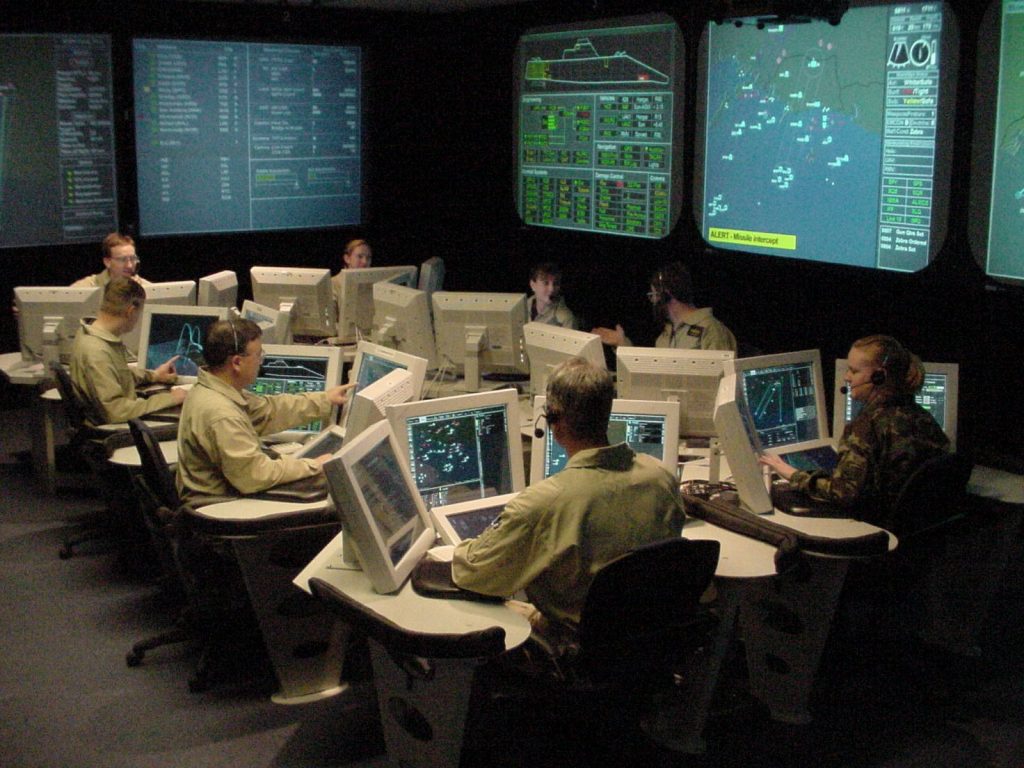
Naval Surface Warfare Center (NSWC) Dahlgren, Va. (Aug. 19, 2004) – Naval reservists, scientists and engineers work in the Integrated Command Environment (ICE) Human Performance laboratory located at NSWC Dahlgren, Va. The ICE lab focuses on the Navy’s evolving human performance and human systems integration (HSI) testing. The lab demonstrates the ability to fight future battles with HSI- engineered hardware, software and features common consoles, displays, and knowledge management features that Fleet Sailors helped design to enhance human performance and mission accomplishment. ICE is part of the vision of Sea Power 21. NSWC Dahlgren provides research, development, test and evaluation, engineering, and fleet support for: Surface Warfare, Surface Ship Combat Systems, Ordnance, Strategic Systems, Mines, Amphibious Warfare Systems, Mine Countermeasures, and Special Warfare Systems. U.S. Navy photo (RELEASED)
This paper has addressed the studies performed over a 30-year period that led to the establishment of the DNL, its modification, and its abolishment. The studies have not stopped however. Throughout the 1990s the BRAC process continued and there were a collection of studies that addressed efficiency (e.g., the reinvention studies and standardization of business systems and processes), the costs and effectiveness of the Defense laboratory structure, contracting out and privatization, and consolidation and realignment. Although the systems commands have each taken a different approach to organizing and managing their programs and their associated laboratories, this basic structure has continued to the present. There have been a variety of organizational and management changes that have modified the relationship between the system commands and their included R&D centers.
References
Books, Articles, and Reports
Allison, David, Ed. The R&D Game: Technical Men, Technical Managers, Research Productivity. Cambridge, MIT Press, 1969.
Allison, David K. and Joseph Marchese. Index of Oral Histories Relating to Naval Research, Development, and Acquisition. Washington, D.C.: Department of the Navy, 1992.
Amato, Ivan. Pushing the Horizon: Seventy-Five Years of High Stakes Science and Technology at the Naval Research Laboratory. Washington: GPO, 1999.
Anspacher, William B., Betty H. Gay, Donald E. Marlowe, Paul B. Morgan and Samuel J. Raff. The Legacy of the White Oak Laboratory. Dahlgren, VA: NSWCDD, 2000.
Arthur D. Little, Inc. “Basic Research in the Department of Defense.” 10 November 1960.
Baile, Kenneth C. “Historical Perspective of NAVSWC/Dahlgren’s Organizational Culture (NSWC MP 90-715).” Dahlgren, VA: NSWC, 1991.
Beason, J. Douglas. DOD Science and Technology: Strategy for the Post-Cold War Era. Washington, D.C.: National Defense University Press, 1997.
Bowen, Harold G. Ships, Machinery, and Mossbacks. Princeton: Princeton University Press, 1954.
Bush, Vannevar. Science: The Endless Frontier. A Report to the President. Washington, 1945 (Reprint 1990).
Carlisle, Rodney P. Management of the U.S. Navy Research and Development Centers During the Cold War. Washington: GPO, 1993.
________. Powder and Propellants: Energetic Materials at Indian Head, Maryland, 1890-1990. Washington: GPO, 1993.
________. Navy RDT&E Planning in an Age of Transition. Washington: Department of the Navy, 1997.
________. The Relationship of Science and Technology: A Bibliographic Guide. Washington: Department of the Navy, 1997.
________. Where the Fleet Begins: A History of the David Taylor Research Center. Washington: Department of the Navy, 1998.
Christman, Albert B. Sailors, Scientists, and Rockets: History of the Naval Weapons Center, China Lake, California, Volume 1. Washington: Department of the Navy, 1971.
________. Target Hiroshima: Deke Parsons and the Creation of the Atomic Bomb. Annapolis. MD: Naval Institute Press, 1998.
________. “Evolution of Navy Research and Development.” Draft Paper, Undated.
________. “You Can’t Run a Laboratory Like a Ship.” Undated.
Colvard, James E. “Roles of In-House R&D Institutions in a Free Enterprise System.” Johns Hopkins APL Technical Digest. Vol. 5, No. 3, 1984.
________. “Warriors and Weaponeers: Reflections on the History of their Association Within the Navy.” Unpublished Paper, 30 May 1995.
________. “Closing the Science-Sailor Gap.” U.S. Naval Institute Proceedings. June 2002, 74-77.
________. “Historical Perspective on Naval R&D.” Presentation to Naval Research Advisory Committee (NRAC), videotape, Undated.
Cunningham, Noble E. The Process of Government under Jefferson. Princeton: Princeton University Press, 1978.
Conversion of Defense Research and Development Laboratories” (Adolph Report). 30 September 1991.
Gerrard-Gough, J.D. and Albert B. Christman. The Grand Experiment at Inyokern: History of the Naval Weapons Center, China Lake, California, Volume 2. Washington: Department of the Navy, 1978.
Hedrick, Captain David I., USN. “Research and Experimental Activities of the U.S. Naval Proving Ground.” Journal of Applied Physics, March 1944.
________. “U.S. Naval Proving Ground, Dahlgren, Virginia: History, April 1918 – December 1945 (NPG-H-1).” Dahlgren, VA: NPG, 1945.
Hollingsworth, G.L. “A Review of Laboratory Missions and Functions.” August 1974.
Luttwak, Edward N. Strategy and Politics. New Brunswick, NJ: Transaction Books, 1980.
________. Strategy and History. New Brunswick, NJ: Transaction Books, 1985.
________. Strategy. Cambridge, MA: Harvard University Press, 1987.
McCollum, Kenneth G., Ed. Dahlgren. Dahlgren, VA: NSWC, 1977.
Naval Research Advisory Committee. “Report on Naval Research and Development.” Washington: Office of the Assistant Secretary of the Navy (Research, Development, and Acquisition, October 1994.
Ray, Thomas W. “‘The Bureaus Go On Forever …’.” U.S. Naval Institute Proceedings. January 1968, 50-63.
Sapolsky, Harvey M. The Polaris System Development: Bureaucratic and Programmatic Success in Government. Cambridge, MA: Harvard University Press, 1972.
________. Science and the Navy: The History of the Office Naval Research. Princeton: Princeton University Press, 1990.
Smaldone, Joseph P. “History of the White Oak Laboratory.” Silver Spring, MD: NSWC, 1977.
Smith, Bernard. Looking Ahead From Way Back. Richmond, IN: Prinit Press, 1999.
Westrum, Ron. Sidewinder: Creative Missile Development at China Lake. Annapolis, MD: Naval Institute Press, 1999.
Wright, Capt. E.A. “The Bureau of Ships: A Study in Organization (Part 1).” Journal of the American Society of Naval Engineers, February 1959, 7-21.
________. “The Bureau of Ships: A Study in Organization (Part 2).” Journal of the American Society of Naval Engineers, May 1959, 315-27.
Primary Source Material
Archival material cited in this manuscript is from the Warfare Center Collection of the Operational Archives, Naval Heritage and History Command at the Navy Yard in Washington, D.C. unless otherwise noted. The primary source material listed below was supplemented by official reports from the Technical Library at the Naval Surface Warfare Center, Dahlgren Division, which are listed above.
Unpublished Reports, Memoranda, Letters, and Instructions
Booz, Allen & Hamilton. “Review of Navy R&D Management, 1946-1973.” 1 June 1976.
Bureau of Ships. “A Functional Approach to BuShips.” Bureau of Ships Journal, June 1965, 6-8.
Chief of Naval Material (CNM), “Installation of NIF in CNM Laboratories,” Memorandum dated 12 December 1967.
Comptroller General of the United States. “Report to the Congress: Project REFLEX (Resource Flexibility) – A Demonstration of Management through Use of Fiscal Controls without Personnel Ceilings, Report B-165969.” 21 June 1974.
Coopers & Lybrand. “Management Analysis of the Navy Industrial Fund Program: Naval Laboratories Review Report.” June 1986.
Deputy Chief of Naval Operations (Development) (DCNO (D)) to Chief of Naval Operations (CNO), “Distribution of Functions in Navy Department,” Memorandum dated 19 April 1966.
Director, Defense Research and Engineering (DDR&E) Study dated 25 October 1966 “Problems of the In-House Laboratories and Possible Solutions.”
Director of Navy Laboratories. “A Plan for Improving the Effectiveness and Utilization of the Navy’s In-House Labs” (Lawson Report). 25 May 1971.
________. “How Can the Labs Best Serve the Navy?” (Second Lawson Report). July 1971.
Galantin, Admiral I.J. (CNM) to Assistant Secretary of the Navy, Research and Development, “RDT&E Management,” Memorandum dated 28 June 1965.
Hilyer, Robert, “The Future of the Department of Defense In-House Laboratories in the World of Research and Development,” Transcript of speech delivered to the Inter-laboratory Committee on Personnel Administration (ILCPA) – West Coast on 26 January 1977.
Leydon, J.K. “The Management of Navy In-House Laboratories.” 17 December 1964.
Marchese, Joseph to Howard Law “Summary of Fifty-five Reports that Involve Management of Military R&D,” Letter dated 6 August 1987.
Morse, Robert W. “On the Management of Navy Laboratories.” 4 January 1965.
Naval Weapons Center (NWC) Operating Principles, 1974
Naval Weapons Laboratory. “Recommendations for the Development of the Naval Weapons Laboratory (NWL AR-103).” Dahlgren, VA: NWL, 1968.
NAVMAT INSTRUCTION 5430.26 “Director of Laboratory Programs; establishment of,” 26 April 1966.
NAVMAT INSTRUCTION 5450.8 “Navy R&D Laboratories; command relationships and management policies for,” 27 June 1967.
NAVMAT INSTRUCTION 7000.13 “Laboratory Acceptance of Funds; policy on,” 23 October 1968.
Office of Director, Defense Research and Engineering. “Report of the Defense Science Board on Government In-House Labs” (Furnas Report). 6 September 1962.
________. “Report of the Task Group on Defense In-House Labs” (Glass Report). 1 July 1971.
SECNAV INSTRUCTION 5420.158 “Advisory Group to ASN (R&D) on Laboratory Matters; Establishment of,” 2 January 1964.
SECNAV INSTRUCTION 3900.13A “Management of Navy Research and Development Laboratories,” 1 November 1966.
SECNAV INSTRUCTION 3900.13B “Management of Navy Research and Development Resources and Installations” 1 June 1971.
Sherwin, Chalmers. “A Plan for the Operation and Management of the Principal DOD In-House Laboratories.” 16 November 1964.
________. “A Proposed Plan for the Organization of the Principal Navy In-House Laboratories.” 16 November 1964.
U.S. Bureau of the Budget. “Report to the President on Government Contracting for Research and Development” (Bell Report). 30 April 1962.
U.S. Civil Service Commission. “Problems in the Management of Department of Defense In-House Laboratories.” 27 December 1967.
U.S. Department of Defense. Task Force 97 Action Group. “Review of Defense Laboratories: Progress Report and Preliminary Recommendations” (Fubini Report). September 1961.
U.S. Department of the Navy. “Report of the Committee on Organization of the Department of the Navy” (Franke Report). 31 January 1959.
________. “Research and Development Management Study,” Review of Management of the Department of the Navy. Volume II, Study 3. 19 October 1962.
________. Task Force on In-House RDT&E Activities. “Memorandum for Policy Board, In-House RDT&E Field Activities Study” (Raney Report). April 1965.
________. “Director of Navy Laboratories, establishment of (SECNAV INST 5430.77).” 20 December 1965.
________. “Report of the Navy-Marine Corps Acquisition Review Committee.” January 1975.
(Return to April 2016 Table of Contents)
Footnotes

